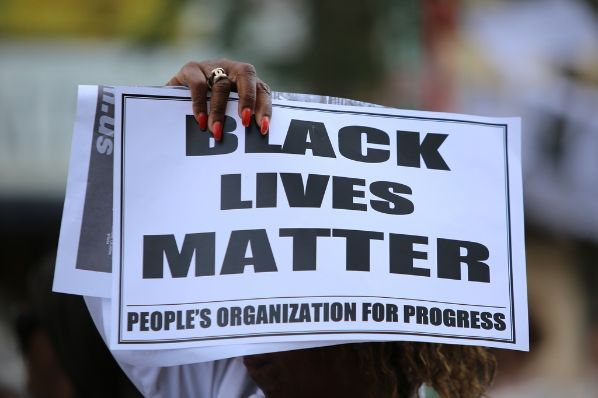The Black Lives Matter movement is so powerful within the Democratic Party that Hillary Clinton sought their endorsement (failing that, she invited mothers whose causes were championed by BLM to appear at her nominating convention).
The theory behind the movement is simple: racist cops kill black men who are just minding their own business. Thus their enchanting mantra, "Pigs in a blanket, fry 'em like bacon." But as Heather Mac Donald points out, a better name for the movement might be Black Lies Matter:
Yet the Black Lives Matter movement is based on a lie, and not just the lie that a pacific Michael Brown was gunned down in cold blood by Ferguson, Mo., police officer Darren Wilson in August 2014.
The idea that the U.S. is experiencing an epidemic of racially driven police shootings is also false, and dangerously so. Several studies released this year show that police officers are less likely to shoot blacks than whites.
But just as Michael Brown continues to be venerated as a martyr to police brutality despite the Justice Department's evisceration of the "hands up, don't shoot" narrative, the media, activists and many politicians continue to traffic in demonstrable untruths about police shootings, race and crime.
The facts are these: Last year, the police shot 990 people, the vast majority armed or violently resisting arrest, according to the Washington Post's database of fatal police shootings. Whites made up 49.9 percent of those victims, blacks, 26 percent. That proportion of black victims is lower than what the black violent crime rate would predict.
Blacks constituted 62 percent of all robbery defendants in America's 75 largest counties in 2009, 57 percent of all murder defendants and 45 percent of all assault defendants, according to the Bureau of Justice Statistics, even though blacks comprise only 15 percent of the population in those counties.
In Chicago, 80 percent of all known murder suspects were black in 2015, as were 80 percent of all known nonfatal shooting suspects, though they are a little less than a third of the population. Whites made up 0.9 percent of known murder suspects in Chicago in 2015 and 1.4 percent of known nonfatal shooting suspects, though they are about a third of the city's residents.
Such racially skewed crime ratios are repeated in virtually all American metropolises. They mean that when officers are called to the scene of a drive-by shooting or an armed robbery, they will overwhelmingly be summoned to minority neighborhoods, looking for minority suspects in the aid of minority victims.
Law-abiding citizens living in low-income, high-crime neighborhoods have even more need than people in more prosperous zip codes. By making it even more dangerous than previously for the police to do their jobs, BLM actually harms minorities.
If it becomes harder and harder to recruit men and women to serve in law enforcement, it is not the gated communities that will suffer.


